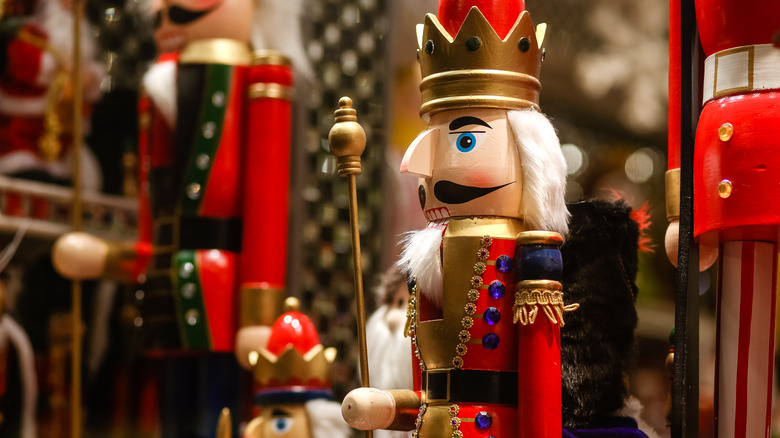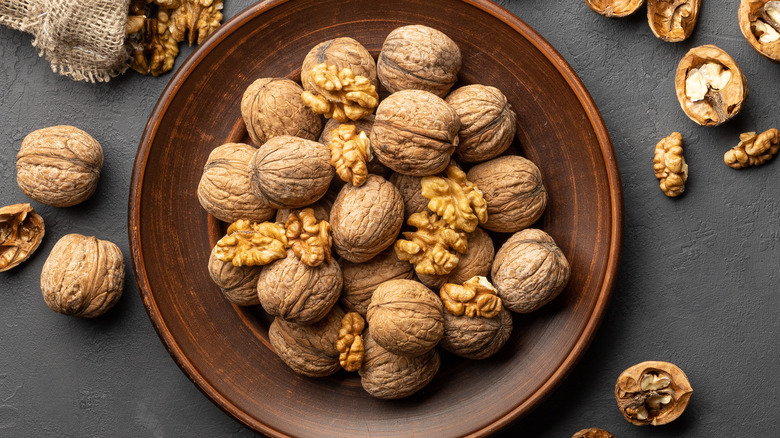Can You Actually Use Nutcrackers To Open Nuts?
Nutcrackers are typically synonymous with sugarplum fairies, dancing mice, and ballerinas leaping about. The brightly-painted wooden figures have played a prominent role in popular culture since 1892, when Russian-born composer Peter Tchaikovsky's iconic ballet "The Nutcracker and the Mouse King" made its theatrical debut in Germany. The now world-renowned production made its way to the U.S. in the mid-20th century, where it became an instant classic, thus cementing the iconography of the figurines (per Slate).
Often purchased as collectors' items, nutcrackers are put on display at Christmastime as intricate household décor. Today, they come in a variety of different styles, including the classic soldiers, kings, Santa Claus, and other famous characters. Nutcrackers are also considered good luck according to German tradition.
In fact, it's said that nutcracker soldiers were first created in the German Erzgebirge region around 1800, according to Arlene Wagner, co-founder of the Nutcracker Museum in Leavenworth, Washington, per National Geographic. As legend has it, there once was a farmer who needed a better solution for cracking open hard-shelled nuts, as his outdated method was taking too long and negatively affecting his productivity. So, he held a contest among villagers to see who could offer up a new technique. The winner was a puppeteer who built a lever-mouthed doll, according to Slate. But, are modern nutcrackers supposed to actually be used to pry open tough-shelled nuts?
Using a nutcracker to open nuts is possible, but not recommended
According to ChristKindl-Markt, nutcrackers have been around for centuries, originally carved in the shapes of birds and other animals. Over the years, the purpose of nutcrackers has transitioned from functional to merely ornamental, however. Since most of these figurines are made from wood, it is possible that a super-strong, fibrous nut can actually break its jaw, so to speak. But, prior to 1940, most nutcrackers were designed to do what their name implies.
However, Arlene Wagner of the Nutcracker Museum (and owner of more than 6,000 of the trinkets herself) explains that, during this time, new technologies for mechanically shelling and packaging nuts entered the scene, reducing the need for their intended use. Nuts are also a bit larger than they used to be as a result of genetic engineering, making them more challenging to split open to reveal the seed inside (per National Geographic).
In a nutshell, you're probably better off investing in a handheld nutcracker made from metal or, better yet, buying your macadamia nuts, walnuts, and pistachios shell-free so you don't have to worry about making a mess or hurting yourself. So, save your nutcrackers for artful displays or as gifts for your grandparents. We'll leave you with one bonus fun fact: Nutcrackers' creepy smiles are believed to symbolize and/or mock the era's tyrannical leaders (per ChristKindl-Markt).

